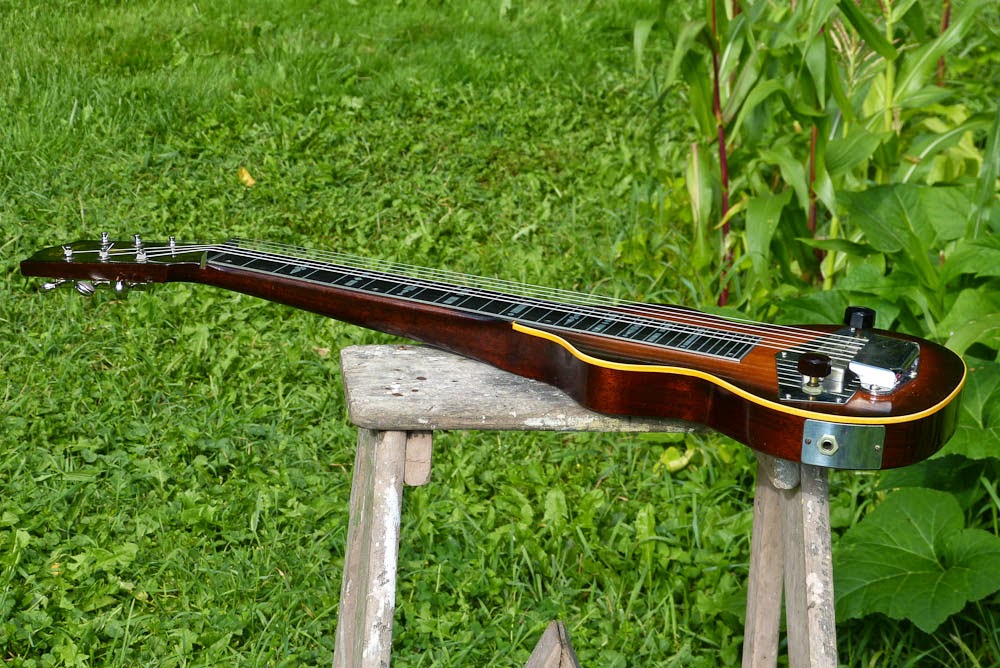c.1941 Gibson EH-125 Lap Steel Electric Guitar
This thing is so clean! I have no idea how instruments can survive like this with only the most minor scratches or scuffs added over their many years. This one just recently landed and the only work I had to do was a light cleaning, swapping out the old tuners for repros, spraying contact cleaner on the volume and tone pots, and springing the jack clip back just a little bit to make better contact.
While the EH-125 isn't as desirable as the EH-100 or EH-150 which tend to include "Charlie Christian" style pickups it's nothing to sneeze at: one big solid hunk of mahogany cut to a gorgeous shape and toting a P-13 (P-90 ancestor) pickup. It sounds amazing, as expected, with a clear tone mixed with the sweet mwah that only these P-13s pull off. Because of the good build quality and wood, too, you've got lingering sustain and a more complex sound overall compared to an average steel from the time.
This instrument is all-original except for a set of replacement tuners. The originals are stashed in the case with the original steel/slide as well.
Don't ya love the look of that sunburst finish with cream trim? Or the big old control plate with brown bakelite knobs? Pretty classy.
Here you can see just how absurdly clean the original finish is... and also check out the big old steel nut! That's what I want to see on a lappy.
The board, in this case, is a big metal plate with black stenciling/enameling. It looks ultra-slick.
With a P-13 right at the bridge this can get you old honky-tonk, Hawaiian electric, and Western swing sensibilities. It won't do straight-up 50s Fender or Magnatone-sounding work, however, as the pickup is innately warmer and sweeter with a bell-like fundamental compared to the biting and super-tight sound of those makes.
Guh... the finish just glows on this sucker.
I love how Gibson retained the vaguely "Hawaiian guitar" outline with the body shape.
As noted before the original tuners (with dilapidated buttons, original screws, and cranky feel) are stuffed in the case. These repro Kluson-style units work just fine in their place.
Check out the tall original pots under those bakelite knobs -- they really make the knobs stand up tall! I'm pretty sure this is on purpose as they're original and perhaps it's to make volume or tone swells a bit faster for the player.
The wrist-rest is removable if desired. Please don't mind the bit of dust/pollen collected while taking photos outside.
...and the original chip case (in good shape) has certainly done its job, no? A period steel/slide is included with the instrument (seen on the strings, here).














Comments